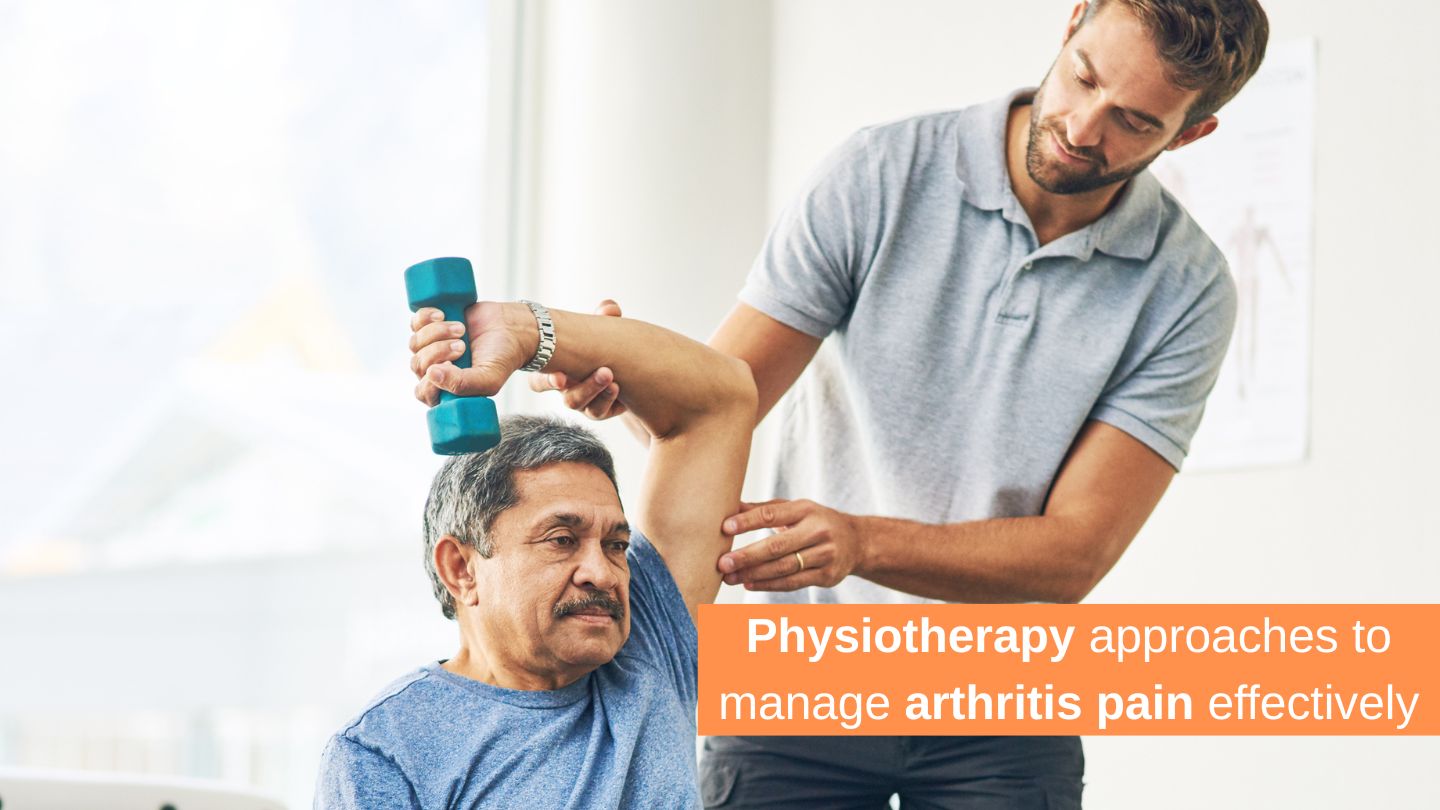
Physiotherapy approaches to manage arthritis pain effectively
Physiotherapy Approaches To Manage Arthritis Pain Effectively
Let’s bust two myths today. The first one is that Arthritis cannot be managed. For years, people with arthritis have been suffering due to a lack of mobility and have been relying only on medication. The inflammation and swelling in their joints have given them pain, which they believed they had to live with. That is untrue. Physiotherapy and its various modalities can help tremendously in the management of arthritis and significantly help in reducing the discomfort.
That brings us to our second myth that physiotherapy is only exercises. Physiotherapy is an entire approach that is an amalgamation of various techniques and modules that help people live better without pain and become independent.
What is arthritis?
Arthritis is a condition in which there is swelling and inflammation in the joints. This causes discomfort, pain, and alters the mobility of a person. Sakina Khorakhiwala, a 60-year-old homemaker from Surat, says that due to arthritis, she used to find it challenging even to open a bottle or stir a spoon for a long time. It was only when she began physiotherapy that the pain started easing, and she could go about her daily activities without having to be dependent on others all the time.
What is the role of physiotherapy in arthritis?
Arthritis is a lifelong disorder, but it can at least be controlled. Physiotherapy helps by:
- Reducing pain and stiffness
- Advancing the mobility and the flexibility of the joint.
- Making the muscles that hold the affected joints stronger.
- Improving the quality of life in general.
Best physiotherapy approaches
1-Tailored exercise programs
One of the best tools that can be used to counter arthritis pain is exercise. Low-impact exercises determined by physiotherapists are safe and are joint-friendly.
They include:
Resistance training that helps the joints and eases strain.
Exercises such as stretching to relieve stiffness.
Endurance training aerobically (walking, cycling, or swimming).
It is important to note that regular and low-intensity exercise is better than intensive exercise for arthritis.
2- Hydrotherapy (Aquatic Therapy)-This treatment is a water-based therapy and involves submerging a person in warm water, usually in a pool, spa, or bathtub.
Warm water exercise takes off the strain on the joints, and movement becomes painless and less difficult. The body is supported and assisted in the development of the muscles due to the assistance of the slight resistance and the buoyancy of water.
Hydrotherapy is also relaxing to many people with arthritis.
3-Manual therapy
Physiotherapists employ physical methods, including mobilization or massage, to:
Enhance blood circulation in the needed region.
Reduce stiffness
Favour muscle relaxation in the area.
Increase mobility and alleviate pain.
4-Assisted devices and supports.
Occasionally, physiotherapists prescribe assistive devices such as braces, orthotics, or canes to limit the amount of stress on the joints. They help to improve posture and balance by learning how to use them.
5-Heat and Cold Therapy
Heat pads: Soothe tense muscles and improve the flow of blood.
Cold packs: Lessen swelling and sharp pain, which is numbed.
A physiotherapist will instruct on the usage of heat vs. cold, based on symptoms.
6-Training and Health Promotion.
Patients also receive practical strategies from physiotherapists that include:
7-Appropriate posture and body mechanics.
Slowing down everyday activities to prevent overstrain.
Techniques of joint protection.
Dietary advice (as excess weight puts additional pressure on joints)
8-Newer Approaches
Physiotherapy clinics combine the use of advanced methods such as:
TENS (Transcutaneous Electrical Nerve Stimulation)- slight electrical charges to lessen pain sensations.
Ultrasound therapy – with sound waves to enhance the flow of blood and healing.
What can parents and families do?
Arthritis is usually chronic, and therefore, family intervention is essential. Motivation, participating in mild activities, and assistance in lifestyle changes can make the rehabilitation process easier. Sakina vouches for family support. She says that if it weren’t for her husband’s constant encouragement, she would have given up on the treatment a long time ago. She is happy that he is an integral part of her treatment process, keeps himself updated on her progress, and knows when to coax her to do more or relax or not be too hard on herself.
To sum up, all we want to say is that physiotherapy is not a magic wand. But yes, it does help a person with arthritis become much more comfortable and independent.
Today, Sakina not only runs her catering business successfully but has also been an inspiration to many women from her community to not give up on their lives when faced with chronic conditions. In her words,” There is always a way out, all we need to do is find it.”
Related
BY: Sukino
COMMENTS: No Comments
